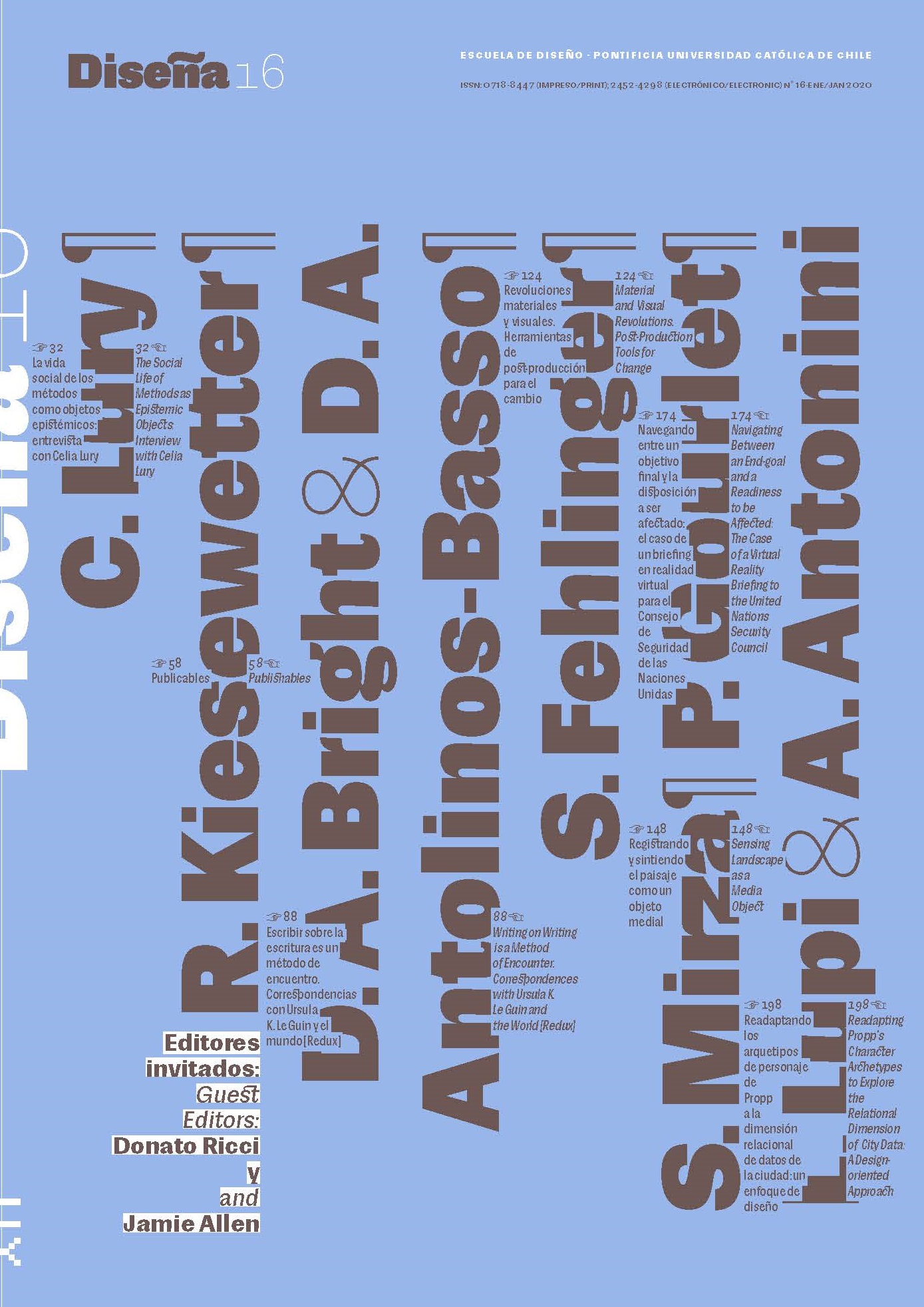Sensing Landscape as a Media Object
Main Article Content
Abstract
Array-based remote sensing has been influencing knowledge practices across many fields, from geology, military planning, and archaeology to landscape architecture and artistic research. These uses have been made possible by declassified image-data and the proliferation of sensing technologies, enabling myriad interpretations of a single landscape. Following a series of remotely-sensed landscape visualizations created via training and conversation with archaeologists, in this article I reflect on using satellite remote sensing for analyzing the impact of militarization on archaeological landscapes in Afghanistan. The article surveys techniques of image generation using exploratory practices that reveal how obscurity is overcome in the process of image interpretation and visualization. In doing so, it tackles the liminality of digital, image-like worlds where mediated perceptions of landscapes aid the creation of evidence for sites that are physically inaccessible to fieldwork. The entanglement of aesthetics and objective knowledge marks this foray into a landscape of data that is composed of digital, virtual, and computable surfaces with imaginations of territory, topography, and terrain that have a materiality of their own, despite being intangible.
Article Details

This work is licensed under a Creative Commons Attribution-ShareAlike 4.0 International license.
COPYRIGHT NOTICE
All contents of this electronic edition are distributed under the Creative Commons license of "Attribution-ShareAlike 4.0 Internacional" (CC-BY-SA). Any total or partial reproduction of the material must mention its origin.
The rights of the published images belong to their authors, who grant to Diseña the license for its use. The management of the permits and the authorization of the publication of the images (or of any material) that contains copyright and its consequent rights of reproduction in this publication is the sole responsibility of the authors of the articles.

